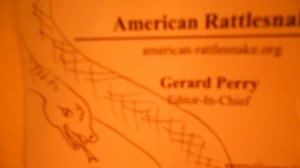In February 2009 a group of Danish soldiers, accompanied by documentary filmmaker Janus Metz, arrived at Armadillo, an FOB [Forward Operating Base] army camp in the south Afghan province of Helmand. For six months, Metz and cameraman Lars Skree shadowed the doings of young Danish soldiers situated less than a kilometer from dug-in Taliban nests. The outcome of their work is a gritty and almost unbelievably authentic war drama that justly won the Grand Prix de la Semaine de la Critique at the 2011 Cannes Film Festival. Because of the nature of these men’s disclosures, however, it provoked a firestorm of debate back in Denmark over the controversial behavior of certain soldiers during one pitched shootout with Taliban killers. But ‘kinetic military activity’ tends to be messy, and not subject to parental supervision.
Through the early tedium of their military entrenchment, through the nightly porn viewings and the computer games, the calls home to Mom on field telephones, through to the steely tension of encounters with the enemy, the filmmakers repeatedly risked their lives shooting this tense, brilliantly edited, and visually sophisticated mirror of the psychology of young men in the midst of a vaguely defined war whose victims seem to be primarily local villagers and farmers. At one point, Afghanis ask some of the men if they are Jewish or Christian. Momentary pause. “Christian.” They ask: American? British? “Danish.” The Afghanis are up on their PC bonus points.
Surreal scenes remind us that this is a civilian arena, as local children seeking sweets and leftover food rations pop up while the men pick their way through poppy fields ripe for opium manufacture, shooing them off kindly after sharing their food with them. More jostling than scenes in which Taliban tracers zing past their portable cameras is the unblinking footage of the handsome soldiers, both tattooed and unblemished, as they try, in the face of constant provocations and problems, to come to terms with waking each day to the realities of being in a terrain of rubble, faced with lethal enemies they rarely see except via overhead drone transmission, green screen computer paradigms and the hasty exits of black-blobbed women and children fleeing their villages in advance of what they know to be gunfights ahead.
They are special forces, and the array of their equipment is majestic, including medics and translators who play key roles throughout in interplay with the agricultural harvesters and farmers. Their panoply of gear is the last word in impressive-and contributes to their ability to shout hectic instructions in the field of combat on helmet mikes, making the combat not only frightening, but blaring, punctuated with noises and static-y orders, cautions and warnings.
The Hurt Locker comes to mind repeatedly, as does Apocalypse Now. But this cinema verite on the ground is something else. Those dead in the ditch are real men, and that is a real corpse. Though the men are warm and comradely with each other, we rarely catch them openly admitting how existentially terrifying their days and nights are with their lives constantly on the line. The CO, commanding officer, seems exceptional, articulately reviewing each expedition and engagement, praising the men when needed, upbraiding them when they are careless, reporting on the progress of medevaced comrades back in Danish hospitals. Awarding the men, who started out at 180 cocky guys, patches of honor, all too aware of the fragility of temporary successes.
They seem admirably prepared, but how prepared is anyone, in the end, for having an IED blow off his leg? Their time is marked off, titles indicating each month, but each day of continued breathing undamaged, alive, a triumph against the inevitable encroaching odds.
________________________________
In Danish, Pashto and Dari. Subtitled in English.
marion d s dreyfus . . . 20©11








Recent Comments